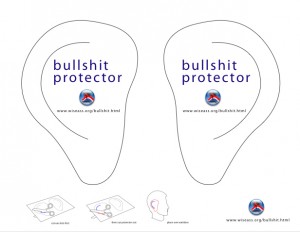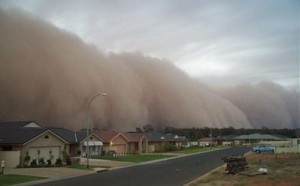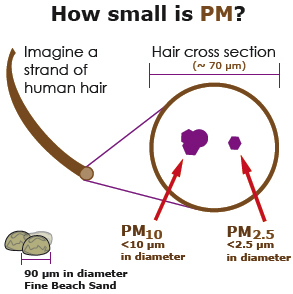Uncategorized
BPA Exposure Linked to Asthma For First Time
 A study conducted by the National Primate Research Center at the University of California designed to look at how the common chemical bisphenol A, or BPA, affects the endocrine system of macaques has discovered that exposure led to changes in their lungs that increased the potential for developing asthma.
A study conducted by the National Primate Research Center at the University of California designed to look at how the common chemical bisphenol A, or BPA, affects the endocrine system of macaques has discovered that exposure led to changes in their lungs that increased the potential for developing asthma.
BPA is found in lots and lots of products in the marketplace, including can linings, plastic bottles, cash register receipts, and older plastic baby bottles. Many studies have found a link between BPA and effects on hormonal systems and fetal development but this is the first time the chemical has been associated with asthma. What makes it especially relevant is the way it mimicked human exposures and gestation. Fetal development of macaques mirrors that of humans, and the exposure levels were similar to those found in real life conditions.
"This is the first study to show a cellular and functional change in the lungs of animals exposed to BPA during the third trimester – a critical window of development," Van Winkle said.
Female macaques between 6 and 13 years of age were used in the study. After mating and conception, the macaques received an implant that gave them dosages of BPA to equal the level of BPA found in human blood, Van Winkle said.
"Our model faithfully replicates what is known for human exposure levels, and this is an environmentally relevant level," said Van Winkle. "Also, we did a constant exposure because human studies have shown people have nearly constant levels in their blood."
Who could have guessed? No one, because the effects of BPA on human lung cells was never studied BEFORE the chemical hit the marketplace. Just like the effect of BPA on human ovary cells wasn't studied, but as it turns out the same team found that exposure to BPA disrupted the development of the ovaries – a significant finding because ovarian development occurs prenatally and the number of eggs a female will have later in life is established at birth.
Increasingly, it appears that generations of kids are being born predisposed to asthma or other health problems based on exposure to chemicals. Those health effects are then exacerbated by constant exposure to chemicals. We're immersing ourselves in an environment that puts our bodies under poisonous assault from before we're born until the day we stop breathing. That's why the only model for chemical safety that makes sense is one based on discovering the health effects of products before we can by them at the grocery store.
RIP: DFW Green Source News Service
 It was with a great deal of sadness that we received word that the Green Source DFW news service is shutting down at the end of September.
It was with a great deal of sadness that we received word that the Green Source DFW news service is shutting down at the end of September.
For three years Phillip Shinoda and Company have produced a quality product that marked a new milestone in North Texas environmental community-building. The Green Source website and weekly mailings connected a wide variety of local green groups and individuals in a way no other single effort has in the past or is designed to do now. Its demise leaves a big gap in the attempt to build a more sophisticated infrastructure for the environmentally minded in DFW.
Its annual awards ceremony were just coming into their own as an institutional regular gathering. Downwinders was proud to win the first Grassroots Leadership ever given. We believed in the mission of the service so much we carried the site's RSS feed directly to our front page here.
What particularly disheartening is that we're in the nation's fourth largest metropolitan area in 2013 and we don't even have a basic all-comers regional green calendar now. We have no network that connects gardeners to Keystone Pipeline activists, solar energy advocates to beekeepers. And we're all the poorer for it.
State Ignores Latest Failure and Local Air Committee, Will Host “Public Information Meeting” on DFW Smog
 This curt announcement went out last Friday courtesy of the Texas Commission on Environmental Quality:
This curt announcement went out last Friday courtesy of the Texas Commission on Environmental Quality:
The Texas Commission on Environmental Quality (TCEQ) will host a public information meeting to provide information on the development of revisions to the SIP for the 2008 ozone National Ambient Air Quality Standard (NAAQS) in the 10-county Dallas-Fort Worth (DFW) nonattainment area. The meeting will take place on Thursday, September 5, 2013 at 10:00 a.m. at the North Central Texas Council of Governments (NCTCOG), Transportation Council Room, 616 Six Flags Drive, Arlington, Texas 76005. NCTCOG and United States Environmental Protection Agency (EPA) representatives will also provide updates on local and federal initiatives.
What this doesn't say is that the last local clean air plan drafted by Rick Perry's TCEQ failed miserably last summer when DFW actually ended up with worse air than when it had begun in 2010. The state can't even bring itself to admit that. It's never had a successful smog plan in DFW, but only Rick Perry's TCEQ plan actually made the air worse. Maybe that's why they're holding this "public information meeting" at a mid-morning time guaranteed to result in a low rate of participation by actual DFW citizens.
You'd also never guess from this release that DFW has a local advisory board for drafting its own clean air plans. The North Texas Clean Air Steering Committee was constituted specifically for the purposes of working with the state on such plans. It hasn't met in two years. Nor is it likely to meet anytime soon if Rick Perry's TCEQ has its way – the state considers it a nuisance to have to come up here and explain itself to local elected officials and environmentalists.
Did we say environmentalists? Since the 2006-2007 smog plan, citizen groups have held three seats on the Committee to balance out the three seats given the local Chambers of Commerce. Right now those seats are held by Downwiders at Risk, the Sierra Club/Public Citizen and the Environmental Defense Fund. The rest of the slots are filled by local city council members, Mayors, County Commissioners and County Judges.
Downwinder's own Jim Schermbeck is a member and has used the meetings of the Committee to cross-examine Rick Perry's TCEQ officials who otherwise receive a mostly unquestioning welcome everywhere else they go. Committee meetings are the one place that representatives fo citizens groups can ask questions like a legislator in an Austin hearing. And the TCEQ reallly doesn't like that. Especially when we've been right about so many things and the TCEQ so wrong.
It's also true that Rick Perry's TCEQ really doesn't even bother to start any kind of consultation or planning process in DFW until a year before the plan is due. Since a new plan to achieve the new ozons/smog standard of 75 parts per billion doesn't kick in until 2015, it's doubtful the Committee will be called to order before next Spring. That way the pollution control measures needed by any plan have no chance of passing a state legislature at the last moment in 2015, ensuing that no real changes take place and DFW remains smoggy.
Perhaps you think that's way too cynical a perspective. But that's exactly what happened this last cycle in 2010-2011. And it was actually worse, because the biggest part of that last plan was to sit back and watch as DFW residents bought new cars. No moving parts.
Meanwhile, can anyone name a current local elected official who's known for their advocacy of clean air? Dallas Mayor Laura Miller fought Perry's coal plants in 2006. in 2013, her successor, Dallas Mayor Mike Rawlings protects secret deals with gas drillers. Dr./Mayor Cluck in Arlington has voted in favor for dozens, if not hundreds, of gas wells near homes, parks, and day care centers even as he recites his familiar litany about running into childhood asthma victims in the hospital emergency room. Fort Worth? Bought and sold to Chesapeake. Dallas County? They're too busy indiscriminately dropping pesticides on us. Mayor Evans of Plano used to be a voice of reason in Collin County. Now you've got Judge Keith Self who never met an air polluter he didn't liked.
Some stalwarts like Parker County Judge Mark Riley and Tarrant County Judge Glenn Whitley still represent moderate Republican views, but many of their peers have been replaced by Tea Party members who think smog is as imaginary a problem as climate change. We're actually going backwards in our local political engagement of the issue.
If TCEQ is emasculating the local advisory group on clean air, it's certainly getting a valuable assist from a feckless DFW indigenous officialdom, who seemed to have all walked away as a group from clean air as a goal they were willing to strive to achieve.
So mark your calendars for another citizen-friendly TCEQ "public information meeting"….at 10 am on a Thursday morning, September 5th, in Arlginton at North Texas Council of Government headquarters, when most people will be working and unable to attend. For for the sensitive among you, we suggest also attending with some handy BS protectors for your ears so as not to irrevokably damage logic receptors in the brain.
Online Again and Ready to Roll
 Our apologies for the extended intermission the last week. A combination of travel and technical problems conspired to thwart postings. But summertime is supposed to be about a more relaxed schedule, right?
Our apologies for the extended intermission the last week. A combination of travel and technical problems conspired to thwart postings. But summertime is supposed to be about a more relaxed schedule, right?
It used to be that way, but increasingly summer is seen by both industry and government as a time to accelerate their agendas while we're all out enjoying what little free time we have available. Kind of an extension of their "night, weekends and holiday" approach to polluting.
Even Christmas has become fodder for this kind of maneuver. Remember when Dallas Mayor Rawlings and former (but still haunting) City Manager Mary Suhm thought they'd sneak the Trinity East gas permits through last December 23rd?
Combine these tactics with our culture's 24/7 news cycle and ability/addiction to being wired-in at all times, and it's hard to get a moment out in the wilderness or countryside to remember why you wanted to throw yourself into the gears of the machine to try and stop the wrongs you see in the first place.
But for whatever reason, you did make that decision to sacrifice your time and energy for something bigger than yourself. And that decision has changed you. Like our friend, former DISH Mayor Calvin Tillman says, "Once you know, you can not know." We keep at it because we need to, because it's self defense, and/or because we can not keep at it.
And so, we're back off the road now, and just in the nick of time. Lots of things coming up in the next month that you you need to know about and contribute to if you can – protecting the progress we're making in the Dallas gas drilling fight, pursuing a real clean-up of lead in Frisco, and even a state meeting on smog to look forward to! We'll be putting up news about all of these things shortly.
Finish loading the vacation pics online, get the kids in school, and tune back into the fights for health justice going on in your own backyard. We need you.
Follow-Up: Silica Air Pollution at Fracking Sites Out of Control
 Last summer we told you about a nationwide Centers For Disease Control/National Institute for Occupational Safety and Health (NIOSH) warning to gas and oil field workers about rampant silica air pollution at fracking sites throughout the country. Research had found that pollution standards were being trampled at every site they tested. These were all tests done within the fence line of the well site, so nobody knows what the off-site impacts were/are, or how far downwind they can extend.
Last summer we told you about a nationwide Centers For Disease Control/National Institute for Occupational Safety and Health (NIOSH) warning to gas and oil field workers about rampant silica air pollution at fracking sites throughout the country. Research had found that pollution standards were being trampled at every site they tested. These were all tests done within the fence line of the well site, so nobody knows what the off-site impacts were/are, or how far downwind they can extend.
Now comes a recent follow-up report that breaks down all the information that was the basis of that 2012 industry warning, and its gruesome. Because it's so detailed, we're pasting it in blocks below in one narrative feed.
Fracking uses a lot of sand. There's an entire silica pollution cycle within fracking that's only now getting the attention it deserves. The mining of sand for fracking can take place miles away from the gas or oil plays and threaten new areas never touched by a well. It takes lots and lots of water. There are lots and lots of trucks, and lots of silica in the air at the mine. Just ask the folks along the Red River, to the northwest of DFW in what used to be pristine rolling timbered hill country.
Once it gets to the fracking site, it creates the clouds of silica air pollution that OSHA is so concerned about. The level of exposure the feds found at some of the fracking sites they studied was "enough to overwhelm the maximum use concentration ratings for the half-mask, air-purifying respirators that workers typically wore" while working at the site. Breathing silica is like breathing sand or cement into your lungs. Eventually it fills them up and hardens your air passageways and you suffocate to death. Happens in the cement industry a lot. We know this is a real and current hazard to workers at the site. We have no idea what kind of hazard it is to people off-site. None. Zero. Nada.
This is why regulators must be cautious in deciding things like "setback distances." The difference between 1000 and 1500 feet could be a dramatic drop-off in silica pollution. That could be an important margin of error for public health we need but don't know much about right now.
Here's the story from Robert Iafolla in Bloomberg:
Workers' Silica Exposure at Fracking Sites Far Exceeds OSHA Limit, NIOSH Study Finds
The concentration of silica in the air workers breathe exceeded occupational health criteria at all 11 hydraulic fracturing sites tested by the National Institute for Occupational Safety and Health, the American Industrial Hygiene Association announced July 31.
Researchers measured the silica levels of more than 100 personal breathing zone samples at fracking sites in five states, finding levels above the Occupational Safety and Health Administration's permissible exposure limit (PEL), NIOSH's recommended exposure limit (REL), and the American Conference of Governmental Industrial Hygienists threshold limit value (TLV).
In some instances, the samples exceeded OSHA's PEL by a factor of 10 or more. That level of exposure is enough to overwhelm the maximum use concentration ratings for the half-mask, air-purifying respirators that workers typically wore, the study said.
“Although effective engineering controls for crystalline silica are well established in other industries, controls to limit silica-containing dust generation during hydraulic fracturing are only now emerging due to the relatively recent understanding of the hazard and magnitude of exposure risks,” the study authors wrote.
The study appears in the Journal of Occupational and Environmental Hygiene, published jointly by AIHA and ACGIH.
NIOSH first flagged the occupational hazard of silica exposure at fracking sites in a June 2012 Hazard Alert. The journal article describes the research that informed that alert (42 OSHR 576, 6/28/12).
Silica sand is a crucial and common component in many fracking operations. Silica is often mixed with the water and chemicals injected into shale formations during fracking, with silica acting as a “proppant” to keep the underground fractures open to allow oil or natural gas to flow. Approximately 28 million metric tons of silica sand was used in fracking during 2012, according to the U.S. Geological Survey.
The heavy use of silica is reflected in the air contamination at fracking sites. Just over half of the 111 samples that NIOSH tested exceeded the PEL for silica, while 69 percent exceeded the REL, and 84 percent exceeded the TVL.
OSHA's PEL is calculated from the percent of crystalline silica in the respirable dust; the PEL for 100 percent silica would be 0.1 milligram per cubic meter of air. NIOSH's REL is 0.05 milligram per cubic meter, and the ACGIH's TVL is 0.025 milligram per cubic meter.
OSHA's proposed regulations for silica could lower the PEL to 0.05 milligram per cubic meter, although that has been met with fierce resistance from industry. The proposal has been on hold at the White House Office of Management and Budget since February 2011.
Researchers took samples at fracking sites at five shale formations: Bakken in North Dakota, DJ Basin in Colorado, Eagle Ford in Texas, Fayetteville in Arkansas, and Marcellus in Pennsylvania. The fracking operations at those locations used silica as the proppant, with the exception of the Bakken site, where 60 percent of the proppant was a ceramic material.
None of the 10 samples taken at Bakken exceeded OSHA's PEL. Two-thirds of the samples at Marcellus, 54 percent at Fayetteville, 53 percent at DJ Basin, and 50 percent at Eagle Ford went over the PEL.
Typical fracked gas or oil wells go through 12 to 20 stages, with each stage requiring hundreds of thousands of pounds of sand, creating airborne dust at the sites, the study said.
Sand is delivered from tractor trailers and pumped with compressed air through fill ports into on-site storage and delivery vehicles known as “sand movers.” Those sand movers use motor-driven belts called “dragon tails” to supply sand to blender trucks, with larger loads requiring multiple vehicles moving sand across a transfer belt. Blender hoppers pump the sand-as-proppant through a manifold, piping, and into the well.
Workers operating sand movers and transfer belts are exposed to the highest levels of silica, the study said.
Overall, the study found seven points of dust generation that were common at all 11 sites:
• from “thief hatches” on the tops of sand movers during filling,
• from the sand mover belt,
• from the momentum of falling sand below the dragon tail at the blender hopper,
• from transfer belts when sand is deposited onto the belt and conveyed to the blender,
• from sand leaving the end of the dragon tail,
• from fill ports of sand movers during refilling operations, and
• from truck traffic at the fracking site.
The study said that about 435,000 workers were employed in the U.S. oil and gas extraction industry during 2010, with nearly half employed by well servicing companies, including companies that use fracking.
The study “Occupational Exposures to Respirable Crystalline Silica During Hydraulic Fracturing” is available at http://tinyurl.com/mn5sbc3.
Dallas Public Participation Rollback Continues: Staff Eliminates Aug 15th Public Hearing, Provide None in Evening
 And just like that, Dallas City Hall decides that more public participation in writing the new gas drilling ordinance isn't what they want after all.
And just like that, Dallas City Hall decides that more public participation in writing the new gas drilling ordinance isn't what they want after all.
Less than two weeks after releasing a proposed schedule for the City Plan Commission that included three public hearings on the subject, city staff issued a revised schedule for the Plan Commission that scraps the first public hearing for August 15th, and leaves the other two in the middle of the day despite appeals from the Plan Commission itself to arrange for evening public hearings.
Now, the first chance citizens will get to weigh in will be August 22nd at 1:30 pm instead of 4 to 6 pm on the 15th.
What is City Hall scared of? You.
If they had their way, some city staff would sequester members of the CPC in an undisclosed location for the duration of this process, with no opportunity to get contaminated by views other than their own – which are motivated by still trying to accommodate the discredited Trinity East permits.
You represent a complete repudiation of that point of view.
You're armed with the latest science. They want to rely on 2-year old Dallas Task Force recommendations that they also engineered to help Trinity East and ignore everything that came after that.
You're armed with real-life experience of what it's like to live near these kinds of operations. They want the CPC to rely on the soothing assurances from industry and paid-for regulators.
You want an objective reckoning of the facts and hazards. They want to find a way to get Trinity East its permits.
The Plan Commission meets this Thursday at City Hall beginning at 8:30 am in room 5ES with another workshop session lasting until at least 1:30 pm coving topics such as Pad Operations, Site Monitoring, and Permitting. There will be no opportunity for official public comment, but if you want to make unofficial comments on how undemocratic this process is becoming, be our guest. Concerned citizens need to take back their city from out-of-control staffers who want to give permits to discredited companies and sites based on secret deals, no matter the cost to public health or safety. Grabbing back control of the reigns becomes a public duty at this point.
New Proposed Schedule for City Plan Commission Drafitng of Gas-Drilling Ordinance
AUGUST
August 8th Meeting
8:30 – 9:00 am Review of Draft Ordinance
9:00-10:30 am Review of Topics
Pad Site Operations
Gas Drilling/Well Permit
Bonding Requirements
Site Monitoring and Review of Permit Application
Required Plans
10:30-11:00 am
Summary of discussion topics for the day
Revisit previous topics
11:00 am -1:30 pm – CPC Briefing (working lunch)
1:30 pm – CPC hearings on zoning cases
Immediately following CPC Public Hearing – 6:00 pm
Continue discussion of unfinished topics for the day
AUGUST 22 Meeting
8:30 am – 9:00 am Review of Draft Ordinance
9:00 am -10:30am
Physical Pad Site
Emergency Response
Abandonment and Restoration
10:30-11:00
Summary of discussion topics for the day
Revisit previous topics
11:00-1:30 CPC Briefing (working lunch)
1:30pm: 1st CPC Public Hearing on Gas Drilling
SEPTEMBER
September 12th Meeting
8:30 – 9:00
Review of drafted provisions of the Ordinance
9:00-10:30
Discussion of next Topics:
Air Quality
Water
Seismic Permits
Pipelines
Compressors
10:30-11:00
Summary of discussion topics for the day
Revisit previous topics
11:00-1:30
CPC Briefing (working lunch)
September 26
8:30 – 9:00
Review of drafted provisions of the Ordinance
9:00-10:30
Finish discussion of topics from previous meeting
10:30-11:00
Summary of discussion for the day
Revisit previous topics
11:00-1:30
CPC Briefing (working lunch)
1:30 pm: 2nd AND LAST Public Hearing on Gas Drilling at CPC
After public hearing – vote to make recommendations to City Council
Small Stuff Adds Up: Nelson Mandela Edition
 Today is "Nelson Mandela Day" across the planet in honor of one of the most persistent and righteous liberators in modern history. From our vantage point here in the 21st Century, his legacy is secure, the stuff of legends. He is the Father of the new South Africa, a symbol of freedom worldwide.
Today is "Nelson Mandela Day" across the planet in honor of one of the most persistent and righteous liberators in modern history. From our vantage point here in the 21st Century, his legacy is secure, the stuff of legends. He is the Father of the new South Africa, a symbol of freedom worldwide.
On the eve of Thanksgiving in 1984, a small group of Washington activists walked into the South African Embassy on Massachusetts Avenue. They had grown weary of their frustration with the intractable racial injustice in South Africa. They saw a system they did not like. They wanted to do something about it. It was the kind of bubbling disturbance that, if timed right, can launch a movement.
U.S. activists had tried before and failed to bring attention to the situation an ocean away, where 23 million black South Africans were ruled by 4.5 million whites, forced to carry passbooks, and killed, beaten or thrown in jail for bucking apartheid. Mandela, then a leader of the freedom movement, had been in prison for 20 years. He was not a household name in America.
With a little planning and the hope that they could get some attention on a slow news day, Robinson and other Washingtonians — including Mary Frances Berry, Eleanor Holmes Norton, and Walter E. Fauntroy — began a protest at the embassy. They told the South African ambassador of their demands: freedom for Mandela and the release of political prisoners.
That first day only a handful were arrested in front of the embassy. Besides raising awareness about Mandela's fate, the protesters were also trying to spotlight the Reagan administration's policy of "constructive engagement" with the all white, pro-apartheid South African government. They succeeded. Their arrests made international news that day and began a movement. Not only did the arrests in front of the South African embassy continue, occurring almost every week for years, but they also spawned a campus-based "divestiture" movement that demanded colleges and universities purge their stock portfolios of all companies still doing business with the all-white South African dictatorship.
With new Congressional allies, the movement passed the 1986 Anti-Apartheid Act, putting the first American sanctions on South Africa into place. One of the most segregated places on the planet had officially lost the support of its largest and most important sponsor. By 1990, over 160 companies had quit doing business in South Africa and over 4000 people had been arrested in front of its Washington embassy. South African leadership was totally isolated and losing economic steam fast. Nelson Mandela was released from prison that same year, going on to become the first democratically-elected president in its history.
“When we remember Mandela’s life, and we remind ourselves of his commitment and his bravery, it is easy to see the path to success,” Robinson said. “What requires great imagination, and great courage, is to see it from the other side.” In the mid-1980s, it seemed systematic, intractable and unyielding.
In a couple of months, the South African embassy in Washington DC will unveil a nine-foot tall bronze statue of Mandela giving the raised fist salute as he emerged from his Robben Island jail cell. It will be placed on the very spot those first protesters stood almost 30 years ago.
The Free South Africa Movement is a template for how small acts of resistance can grow into something powerful and history-changing. It doesn't always happen, but it can. Timing, strategy, and a little bit of luck all have to combine, but it can happen, if like Mandela himself, and then his supporters, you are extremely persistent, and use your head.
You think about these things very strategically. What can move the needle and what will likely not,” said Randall Robinson, the founder of TransAfrica, the oldest African American foreign policy organization in the United States. “You can protest. But if you can make the wind move, you have to put a sail up. To make the wind move where there is no sail is useless.”
Even though it was decades ago now, this lesson still resonates for everyone who's trying to express a visceral outrage over a perceived injustice, whether it's the Trayvon Martin verdict, or the Keystone Pipeline.
Small stuff adds up.
The Price You Pay to Reveal “environmental degradation for the benefit of powerful and wealthy interests”
 Midlothian? No, Frisco? No, Barnett Shale? No.
Midlothian? No, Frisco? No, Barnett Shale? No.
Russia. Where taking samples of illegal toxic contamination can get you fatally beaten by thugs instead of headlines and news coverage.
After three men in this heavily polluted city beat Stepan Chernogubov unconscious, fracturing his skull and knocking out three teeth, criminal investigators took him, still bleeding, to a police station where they questioned him for four hours and then threatened to bring charges against him.
Chernogubov had been set upon as he was trying to document the pollution streaming from a chromium plant here, pollution that occasionally turns a marsh feeding the Chusovaya River dark red, next to a waste pond that’s bright green. At least two of those in the fracas turned out to be plain-clothes police officers, he said in recounting the May incident.
The 26-year-old student knew the risks. Environmental activism in Russia attracts serious trouble. A forest advocate in southern Russia, Suren Gazaryan, criticized a governor, was thrown in jail and has now fled the country. An editor who campaigned against a highway project through a forest near Moscow, Mikhail Beketov, suffered brain damage in a 2008 beating, and recently died from his injuries.In the southern region of Voronezh, three activists organizing against the opening of a lead and nickel mine were hospitalized in May after private security guards set upon them.
In this case, the environmental movement is fueled by intense nationalism, you know, like a Russian Tea Party, by residents who consider any modern Moscow-based government just another bunch of tourists passing through the ancient homeland of the Cossacks.
A lot of us have wondered what happened to a similar nationalist strain in environmental politics that motivated Republicans like Teddy Roosevelt to create parks and save natural area in the country. Back then, these ecological marvels were part of "American Exceptionalism" – the country was uniquely blessed with a wide spectrum of climates and topography that should be recognized and enjoyed forever by all Americans. Environmental wonders were seen as symbols of the nation's strength and Providence's bias. Destroying these American treasures was seen as an attack on God's blessing to the country.
But maybe the Koch's have bought all that sentiment out.
PM Pollution From Coal Shortens Lives by 5 Years in China
 It's all over the place on the net, but just in case you missed it, it turns out that increasing the amount of Particulate Matter pollution results in more people getting killed or injured by that pollution. Shocking.
It's all over the place on the net, but just in case you missed it, it turns out that increasing the amount of Particulate Matter pollution results in more people getting killed or injured by that pollution. Shocking.
Sources of PM pollution include your car, your local gas well operation, cement plants, and in this particular case in Northern China, coal plants. Northern provinces that got free coal for heating had an average of 55% higher PM concentrations than those living in warmer climes and burning less coal. That resulted in a dramatic loss of life span tha averages just over 5 years, mostly due to cardio-circulatory problems.
This isn't all that hard to understand is it. You breathe air that goes into your lungs. Fill the air with soot, and you fill your lungs with it too. Fill your lungs with soot and your body has a hard time coping with extra crap in your lungs that isn't supposed to be there. When that happens your heart works overtime to compensate. Cause and effect.
Scientists keep telling us that, like lead, ANY exposure to this very fine soot that can lodge in your lungs is potentially harmful. There's no "safe" level of PM. Yet the EPA and the states still issue permits for the release of large quantities of this poison as if that weren't true. It's another depressing example of the science being far ahead of the regulations.
A Smelter Runs Through It: New Documents Confirm Widespread Lead Smelter Contamination of Frisco’s Stewart Creek, including Grand Park
 (FRISCO)—Three new documents, including two reports paid for by the City of Frisco but never publicly released, confirm that the former Exide lead smelter is the source of battery chips and slag waste that line Stewart Creek from Frisco to Lake Lewisville, and concludes the smelter site remains a continuing source of contamination.
(FRISCO)—Three new documents, including two reports paid for by the City of Frisco but never publicly released, confirm that the former Exide lead smelter is the source of battery chips and slag waste that line Stewart Creek from Frisco to Lake Lewisville, and concludes the smelter site remains a continuing source of contamination.
Samples taken in 2011 by a City of Frisco contractor found that 71% of Creek sediment collected had elevated levels of lead, cadmium or arsenic. A “visual survey” done for the City of smelter waste just three months ago found at least 45 “hot spots” of battery chips or slag along the entire five-mile route of the Creek, from the western edge of the smelter site all the way to its mouth at Lake Lewisville. Last year a state environmental inspector warned in an e-mail that she was concerned about the smelter’s battery chips making their way “into Stewart Creek and flowing to Grand Park where a parent who is also a Frisco resident pulls one out of their child’s mouth.”
Local group Frisco Unleaded received the documents last week as part of an Open Records Act Request to the Texas Commission for Environmental Quality. Members say the contents prove the public is right to be concerned about the impact of the smelter site on the City’s ambitious new Grand Park development. “These reports show why any activity downstream of the smelter, including the enjoyment of the new Grand Park, will be impossible without a comprehensive clean-up of the entire Exide site. This problem isn't just going to go away or fix itself," stated Meghan Green.
Green also called for the EPA to step in and take over a clean up that until now, has been directed by the state and city. "It’s clear that the toxins at the smelter are being washed into Stewart Creek with each rainfall and are surfacing and will continue to surface along the whole length of the Creek, which happens to also be a tributary into Lake Lewisville. To add insult to injury, Lake Lewisville is a source of drinking water for Dallas. To say that I'm concerned is an understatement. It’s time for the EPA to get more aggressive about protecting public health from this site.”
Although the smelter ceased operation in 2012 and demolition has taken place to remove most of the structures from the central Frisco site, the land itself is the burial ground for tons of lead waste in the form of pieces of used lead-acid batteries broken up for their contents and the slag waste produced from the smelting process. Frisco has arranged to buy an outer ring of the smelter property, but the core part of the operation remains in the hands of Exide, now going through bankruptcy. It’s that core, as well as the property Frisco is buying, that’s the source of the battery chips and slag migrating to Stewart Creek, which runs right though the middle of the Exide site.
That continuing threat to Stewart Creek, along with an assessment of historical contamination, is extensively chronicled in the City and State documents released by Frisco Unleaded today. They include:
1. A November 2011 “Limited Site Investigation” Of Stewart Creek by the City of Frisco
The City of Frisco specifically requested this investigation “to evaluate chemicals of concern in sediment in the vicinity of the Grand Park project.” Samples of sediment were collected at a total of 30 sites, and tested for Lead, Arsenic, Cadmium, Selenium, and Sulfates. 71% of the sediment samples tested for Lead, Cadmium and Arsenic exceeded the Texas Commission on Environmental Quality Ecological Benchmark.
2. March-April 2013, of Stewart Creek, Interim Report, City of Frisco
A year and a half after the Creek sediment sampling, contractors for the City of Frisco performed “a walking survey to identify and document the potential presence of visible battery chips and slag in Stewart Creek."
Chips and/or slag were observed in at least 45 different spots along the entire five-mile route of Stewart Creek from the smelter site in Frisco to the entrance of the Creek into Lake Lewisville, or an average of every 600 feet. The first sample was found at the mouth of the Creek as it flows into Lake Lewisville, a source of drinking water for the City of Dallas.
At least 29 hot spots of battery chips and/or slag were found within the boundaries of Grand Park, from Stonebrook Parkway on the south to the North Dallas Tollway, more than 4 times the number of any other segment along the survey. “Frequent occurrences of concentrated battery chips and potential slag material were observed in the Stewart Creek channel in Grand Park from Stonebrook Parkway to the Dallas North Tollway bridge.”
A Smelter Runs Thru It-Summary
3. TCEQ_battery_chip_emails from Texas Commission On Environmental Quality Staff on Recurring Battery Chip Contamination
In June of last year a TCEQ inspector wrote her supervisors that new concentrations of battery chips had shown up in previously clean-up areas of the smelter site. “These battery chips were believed to have washed up this year and accumulated down gradient along the tree line. Some of these chips were observed making their way down towards Stewart Creek. It looks like they’re being carried toward the trees and the creek with the rainwater. (Exide and City representatives) stated that the area was tested (prior to this new accumulation of battery chips) and it was below 250 ppm. I pointed out that there also wasn’t as many battery chips in those areas when the APAR was submitted. In the report, it states that the area would be covered with the geomembrane fabric and it sounded like this is what they want to do with these new battery chips as well (cover them with fabric). I pointed out that if I were to collect a sample that it would most likely exceed 250 ppm and there were just too many that had accumulated to be covered up with the fabric. As we all know, these chips move under rainy conditions. I told (the City representative) that our concern and I’m sure the city’s concern as well is if these battery chips made it into Stewart Creek and flowed to Grand Park where a parent who is also a Frisco resident pulls one out of their child’s mouth.”
One of her supervisors responds that chips will always come up with a rain: “Based on my experience from working on site contaminated with battery chips and slag, rubber battery chips that are buried will float to the surface (just tires in landfills). While working on sites associated with the West Dallas RSR lead smelter, with the exception of where chips were used as road based, every site that had surface chips on the surface were located over areas where slag and battery chips have been deposited in the past. Were subsurface investigations conducted in the areas of concern to determine the extent of contamination? Or did they only conduct surface investigations.”
Critics of the City’s approach to the smelter site clean-up cited the e-mail as a stunning example of Frisco’s caviler attitude about the contamination problem posed by the Creek. “We’ve often said the City is trying to figuratively cover-up the problem of Stewart Creek, but here’s an example of where they’re doing it literally,” said Jim Schermbeck of Downwinders at Risk, the regional clean air group assisting Frisco Unleaded.
Along with the City and State documents, Frisco Unleaded released the results of its own small sampling of battery chips members collected only last week from the public Right-of-Way on the BNSF railroad tracks leading into the smelter site. One of the chips had over 100 ppm of lead on it and 8.5 ppm of Arsenic. The Lead level is above the TCEQ Ecological Benchmark and the Arsenic level is just below it. Schermbeck said it was easy to collect the chips because they’re lying on the open ground.
Besides demanding that the EPA issue a “Imminent and Substantial Endangerment” order to begin addressing the Creek’s clean up, Frisco Unleaded and Downwinders called for the City of Frisco to release all of its Exide-related documents to the public and for the City of Dallas to begin interceding on behalf of its residents, whose drinking water is under threat from the smelter waste.
Green said that despite the City’s rhetorical promise to its residents to be transparent with them about the site, “that obviously hasn’t been the case since we had to get these city documents from the state. We deserve all the information the City Manager and Mayor have about this site. It’s our families, it’s our town, and it’s our tax money. The Mayor and Council need to make a commitment to residents that they’ll share everything they have about the site with the public. ”
Addressing the issue that could pull in Dallas and other cities, Schermbeck noted, “There’s now clear evidence that the Exide smelter has been a constant source of toxic contamination in Lake Lewisville for decades. The City of Dallas needs to wake-up and begin to lobby for the kind of environmental clean up that can put a stop to that contamination to its water supply.”
According to Schermbeck, it’s the new-found evidence of a continuing threat to the Creek and Lake that make this more than just another effort to clean up a past environmental mess, and warrants a serious escalation of regulatory responses. He noted that most toxicologists agree that there is no safe level of exposure to lead, especially for children, whose minds and bodies are still developing. “And yet, here’s this property on Creek’s edge, that’s proven to be a fountain of constant lead contamination flowing downstream through the middle of densely populated neighborhoods, and ending up in a source of municipal drinking water. It’s a clear and present danger to public health that deserves an immediate and potent remedy.”
+++++++++++++++++++
If you want to let Mayor Maso and the Frisco City Council know how you feel about their sitting on this inforamtion for almost two years, please send a qucik "Click N Send" e-mail to them via our "Featured Citizen Action of the Week." Thanks.
